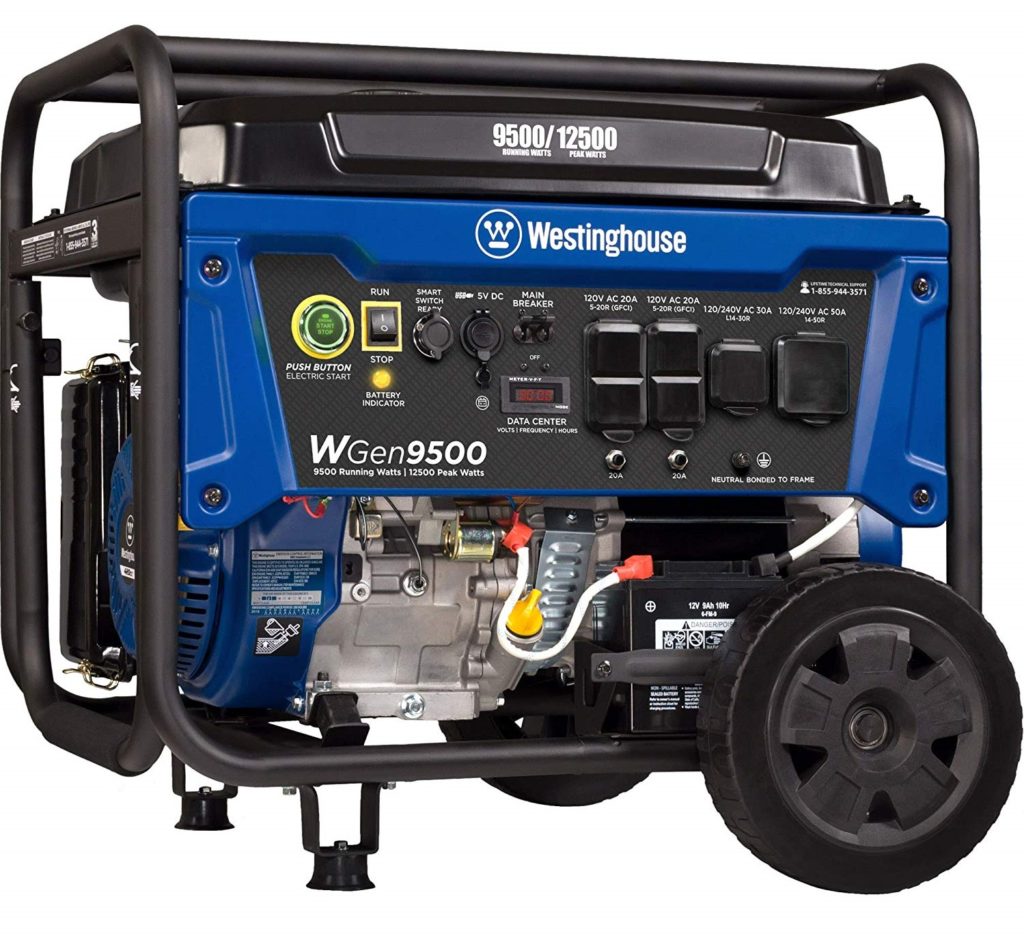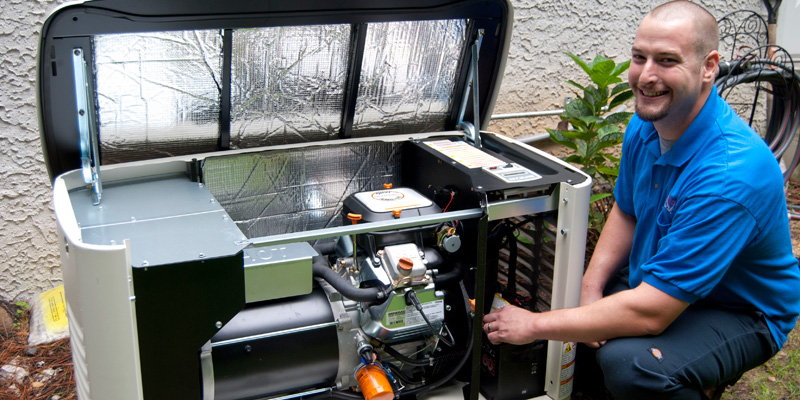Table Of Content

Designed for extreme temperatures, this Champion generator performs reliably at -22°F to 104°F, all while fitting within a standard generator footprint. Additionally, Champion’s generator features gull-wing access doors, making regular maintenance significantly easier for homeowners. Champion is newer in the home generator market, but the company is making a reputable name for itself with excellent quality generators built to last. An unmatched 10-year warranty, free lifetime technical support and a whisper-quiet 63 dbs of noise make Champion’s 12.5kW Home Standby Generator the best on our list. The Forbes Home team is committed to bringing you independent, unbiased ratings and information. Plus, our advisory board of licensed professionals fact-checks and reviews our content for accuracy and relevancy.
Solar
Aside from that, the generator gets positive reviews from online retailers. All in all, the Pulsar G12KBN generator is a good choice if you want a generator with high power capacity on the road. It's reasonably priced at just under $1,000 but comes with only a one-year limited warranty.
Time to Install a Home Backup Power Generator
However, they are noisy and require storage space for the generator and gas, which has a shorter shelf-life than other fuels. A portable generator, typically designed to provide power to a single room for a limited period, typically costs between $500 to $2,000, compared to $5,000 to $18,000 for a whole home option. There are also critical systems generators, which are meant to support essential systems including heat, lighting and kitchen appliances. You can expect a critical systems generator to cost $2,000 to $6,300.
Frequent Extreme Weather Conditions
Mark the area and know that the wall must be opened again for future issues or maintenance. Portable generators are smaller than standby generators because they are often not designed to power the entire house. They can start under 2kW, but you need 5kW or more to power some of your home.
EcoFlow's scalable solar generator can power your entire home or just a weekend away - The Verge
EcoFlow's scalable solar generator can power your entire home or just a weekend away.
Posted: Tue, 09 Jan 2024 08:00:00 GMT [source]
We recommend multiplying the total wattage of your appliances by 1.5 to give yourself a safe margin of error. A small to medium-size house in the U.S. typically uses a minimum of 5,000 to 7,000 watts, so you should expect most generators to have a minimum of 8,500 to 10,000 watt outputs. Home backup generators may be standby, manual, or portable, and costs can vary greatly. Complex jobs may require long trenches for electrical conduit and gas pipes, propane tank installation, or higher labor costs to install liquid-cooled generators. A manual transfer switch allows you to connect and disconnect your generator yourself.

Generator Type
Be sure to purchase the right type of generator for the fuel you’re looking to use, or check to see if it can be easily converted from one fuel source to the other (most can be). In order to take advantage of those benefits, it’s crucial you get the right generator for your unique situation and application. Check out our list of the best whole house generators to see which model would be the best for you to keep your home running even without a connection to the grid. Decisions about size, type, fuel, and other elements will help homeowners determine what the best whole-home generator option is for their home. These can start to feel like too many choices, so just ahead are a few of the questions that are most often asked about this topic, along with answers for getting started.

Transfer Switch
It can continue operating as long as there is a fuel source, and the unit is in good operating condition. Proper maintenance is required to ensure a standby model can continue functioning in this capacity. A wireless monitor provides access to the status of the generator. If the homeowner is away and there’s a power outage, they can make sure that the generator has kicked on.
Home Generator Installation Cost
The National Fire Protection Association (NFPA) code requires generators to be five feet or more away from openings such as doors and windows. The Briggs & Stratton 10kW generator is the loudest per kilowatt on our list, likely due to its smaller size. Furthermore, this Briggs & Stratton generator does not come with an Automatic Transfer Switch, which must be purchased separately.
If you need to maintain power in your home for medical devices, a mobile monitoring generator will help prepare you. This generator’s noise level is pretty standard for its power capacity, rated at 74 dBA. It isn’t equipped for remote monitoring, but a clear gas gauge is on the side to measure your fuel level. The unit weighs a little over 200 pounds and has sturdy wheels for easy transportation.
This could be through a standby light changing color or an error message. The average cost for maintenance is $200 to $500 a year, depending on the brand and how often the technician needs to come out. You can get a basic understanding of the size you need by taking a survey of appliances, HVAC systems, lights, and outlets you need during an outage.
The type of fuel used by the whole house generator—propane, natural gas, diesel, or solar—affects the cost of the generator and installation. Fuel type has a direct bearing on the cost of running the generator over the long term. If your generator is not sized to handle the entire load, you can use a smart load manager to help. Smart load managers prioritize which parts of the home are powered by the unit and let you switch as needed.
You can add these items below to accurately reflect your homes specific backup power needs. Home generators have the largest power capacity of any type of non-industrial generator and are usually able to provide power to an entire home. While portable generators often average between 3,500 and 10,000 watts, home generators usually have a capacity of 10,000 to 50,000 watts, or even more. When a power outage occurs, the home generator automatically switches the grid connection off, starts operating and inputs electrical power into the home’s system within a matter of seconds or less. The generator components will then monitor the grid to detect when power is restored. When energy becomes available from the grid, the generator switches back to municipal power, discontinues sending electricity to the home, shuts down and goes into standby mode until the next occurrence.
If you're looking for ways to keep the power in your home on during outages, a whole home generator might be a fit. But knowing which one is right for you is dependent on your home and your needs. Much of the United States' electric grid was built in the 1960s and 1970s, before the rise of more frequent extreme weather. The North American Electric Reliability Corp recently warned that much of the country faces an increased risk of blackouts during extreme weather events.
Cummins generators feature sound-insulated enclosures, remote diagnostics, and intelligent load management to balance power use across multiple appliances so a smaller generator can power an entire home. In addition to these traditional generators, there are also whole-house solar generators. A solar generator stores energy from sunlight in batteries and then releases that energy into an electrical panel when you turn the generator on.
If the starting watts are not listed, you can usually multiply the running watts by three. Add up the starting watts for each appliance, and multiply the total by 1.5 to create a margin of safety. A small to medium size U.S. household averages a minimum of 5,000 to 7,500 watts, so many generators are sold with 7,500 to 10,000-watt outputs. Portable solar generators cost $500 to $3,300 and are ideal for apartment and condo residents or homeowners seeking an environmentally friendly solution. Solar generators run quietly, produce no fumes, and can be used indoors, but can’t store enough energy to power a whole home.
While the price of the generator is the biggest expense, there are other factors that will determine your total standby generator installation cost. Let’s explore all of them and we’ll share the factors that we have dealt with, when adding a backup generator to our own home, and to clients we’ve helped have them installed. "Homeowners choosing this option will need to ensure an ample supply of fuel on hand to carry them through several days of outage."

No comments:
Post a Comment